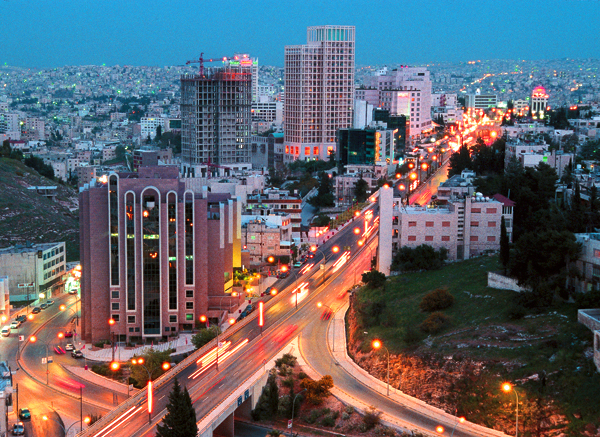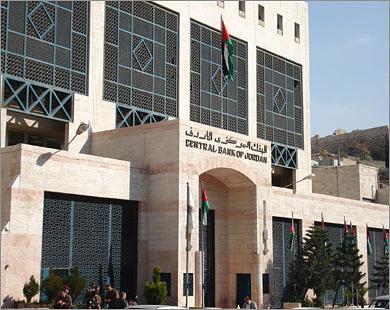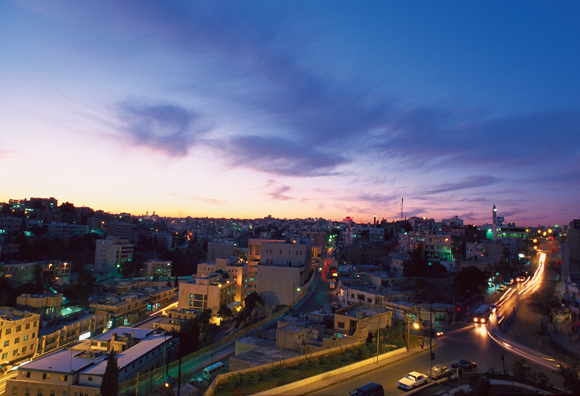Jordan Economy Overview
Jordan’s economy has had robust growth of 6%-7% every year since 2000, with highs of 8% in 2004, and 7.8% in 2008. While the world financial crisis slowed growth to 2.8% in 2009, it but did not stop it.

Content
>Economic Aid
>Economic Problems
>Capital Markets
Economic Overview
Jordan’s economy has had robust growth of 6%-7% every year since 2000, with highs of 8% in 2004, and 7.8% in 2008. While the world financial crisis slowed growth to 2.8% in 2009, it did not stop it. Growth is expected to be 3.5% in 2010, and higher in 2011.
Nasser Sunaa
, CEO of the Jordan Investment Board
If you look at the macroeconomic indicators, we have done pretty well.
Nasser Sunaa, CEO of the Jordan Investment Board sums up the prevailing view:“If you look at the macroeconomic indicators, we have done pretty well. As you mentioned, in 2009, we went through mayhem all throughout the globe, so the fact that Jordan still managed to achieve growth is quite an achievement. 2.8% is not an upgrade, but it is growth nonetheless.
So it’s quite an achievement taking into consideration what happened globally. And as you mentioned, the projections for 2010 are in the 4 to 4.5% range for growth rate. It seems to be pretty good that the indicators so far from the beginning of the year all seem to be encouraging.”
The banking sector proved itself solid; not a single bank failed or asked for state help. The Central Bank had adequately protected the system against toxic debt. The banking system has high liquidity, and is looking to expand.
The effects of the world financial crisis were first felt primarily by the real estate, and construction sectors, where several resort, residential, and commercial projects were delayed or put on hold.
The export sector suffered from the effects of the crisis on other countries, which in turn reduced their purchases from Jordan. Tightness in world financial centers also negatively affected the values on the Jordan stock exchange.
The growing number of tourists visiting Jordan, which has been steadily growing since the 1990s, leveled off as a result of the world financial crisis of 2009, but then grew even faster in 2010, with the number of tourists rising by 26% over the previous year..
The tourist sector currently accounts for 14% of GDP, and is expected to account for 23% by 2020.
Jordan’s fiscal situation, however, is the economy’s weakest spot.
Financial, Economic Development, and Military Aid to Jordan
Jordan receives substantial direct financial, economic development, and military aid from the US; the EU (plus from Britain and many other individual EU states); many Arab states; a host of international banking institutions (World Bank, IMF, etc.) and international NGOs.
Aid packages from these sources have continuously risen since the mid-1990s. For example, US aid to Jordan averaged c. $215m from 1996 to 2002; c. $600m from 2003-2009, and rose to a total of $842m (incl. c. $400m military aid) in 2010.
Economic development aid alone to Jordan from all sources totals $1.3bn in 2010. Total economic development aid to Jordan from all sources increased to $1.3bn, with total US aid alone increasing from $660m in 2009, to $842m in 2010
Characteristics, Problems, and Challenges of the Jordan Economy
The overall Jordanian economy has been marked by the following characteristics, challenges, and problems:
1. The lack of recoverable natural resources upon which to base industries and exports;
The running of annual deficits in
trade balances and governmental
budgeting
2. The need of industries and services to excel at meeting niche market needs in order to expand exports;
3. The lack of local energy sources, and the corresponding need to import energy at staggering costs in terms of GDP;
4. The need to develop new and innovative energy sources;
5. The need to rapidly educate the labor force to compete, and excel at, international business and technological standards in order to successfully compete in international markets;
6. The need to transform educational institutions to be able to teach international business, technological, and scientific requirements;
7. The need for mega-projects to improve infrastructure, especially in energy, water, communication and transportation;
 8. The running of annual deficits in trade balances and governmental budgeting—and the corresponding rise in national debt as the economy attempts to meet all of the above listed challenges at once; and
8. The running of annual deficits in trade balances and governmental budgeting—and the corresponding rise in national debt as the economy attempts to meet all of the above listed challenges at once; and
9. The dependence of the economy and government on foreign financial and development aid to keep afloat.
Jordan has so far been successful at balancing all of these conflicting goals and realities, and constructing innovative new approaches.
But Jordan has recently had an amazing stroke of good luck—the discovery of large, easily minable deposits of uranium, which promises to be a real “game changer,” affecting all of the above factors in favorable ways. Each of these shall be addressed in the Sector Analyses.
Capital Markets
Jalil Tarif, CEO of the Amman Stock Exchange, is very optimistic about Jordan’s capital markets. He reports that “current market capitalization is JD 22 bil. That represents about 137% of GDP, which is considered high compared with international standards….Despite the decline in 2008 and 2009…we are still doing better than many of the exchanges in the region.”
The reason, according to Tafif, is that “We have built a very sound capital market in Jordan in terms of regulations, technology and infrastructure. We have government regulators that oversee the capital market d regulate it in order to achieve its objectives in protecting investors and developing the market for the sake of having fairness, transparency, and efficiency.”
Jalil Tarif
, CEO of the
Amman Stock Exchange
current market capitalization is JD 22 bil. That represents about 137% of GDP, which is considered high compared with international standards….Despite the decline in 2008 and 2009…we are still doing better than many of the exchanges in the region.
But, says Ammar Safadi, Deputy General Manager of Capital Bank of Jordan,
“The problem with the stock market here in Jordan is liquidity. When the market was booming 3 or 4 years ago, everyone was able to go in and buy, but today there is difficulty to liquidate stocks. That is one of the major obstacles here. Also, it is all about perceptions and confidence; people do not have confidence in the stock market. It’s a cycle; there are a lot of stocks that are very cheap, but I don’t know when would be a good time for institutional investors to come in and start investing, which would lead individual investors to action.”
At Capital Bank of Jordan, says Safadi, “we concentrate on service. That is our main edge. 70% of our business is long-term relationships…its all about personal service.”